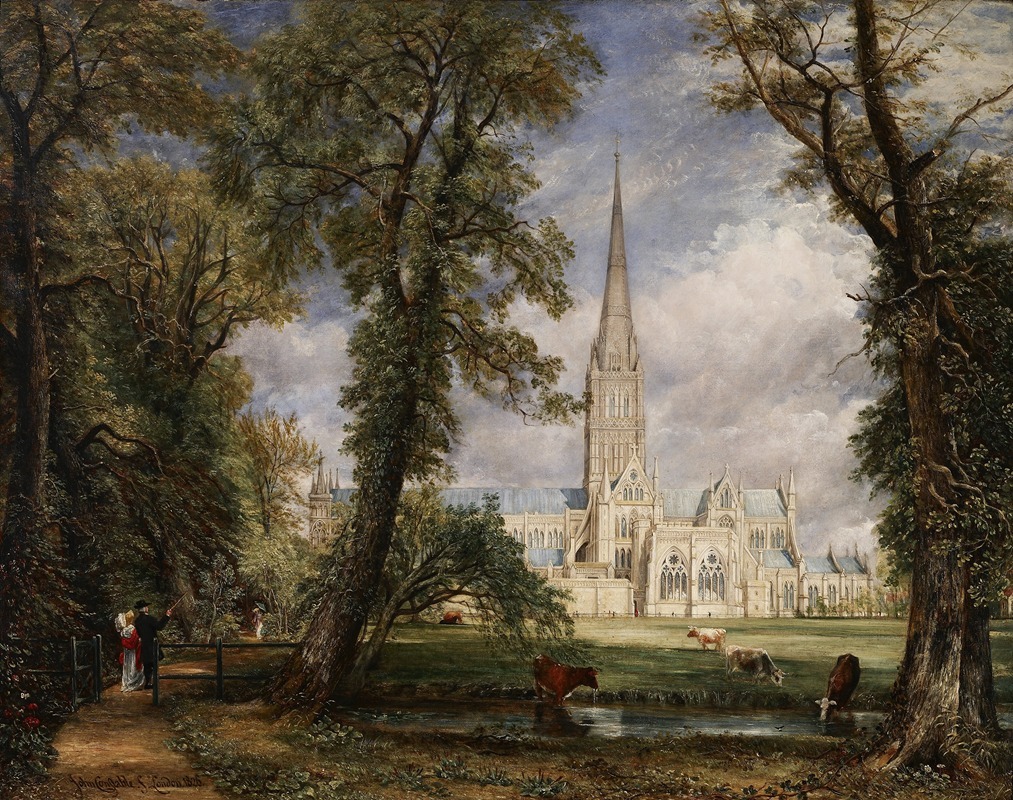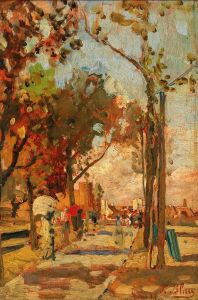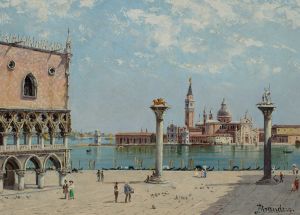
Salisbury Cathedral from the Bishop’s Garden
A hand-painted replica of John Constable’s masterpiece Salisbury Cathedral from the Bishop’s Garden, meticulously crafted by professional artists to capture the true essence of the original. Each piece is created with museum-quality canvas and rare mineral pigments, carefully painted by experienced artists with delicate brushstrokes and rich, layered colors to perfectly recreate the texture of the original artwork. Unlike machine-printed reproductions, this hand-painted version brings the painting to life, infused with the artist’s emotions and skill in every stroke. Whether for personal collection or home decoration, it instantly elevates the artistic atmosphere of any space.
Salisbury Cathedral from the Bishop’s Garden is an oil painting created by the renowned English Romantic artist John Constable in 1823. This artwork is one of several depictions of Salisbury Cathedral by Constable, showcasing his deep admiration for the English countryside and its architectural heritage. The painting is celebrated for its detailed representation of the cathedral and its surrounding landscape, as well as for its emotional resonance and atmospheric effects.
The painting portrays Salisbury Cathedral, a masterpiece of Early English Gothic architecture, as seen from the bishop's garden. The cathedral's towering spire, which is the tallest in England at 123 meters (404 feet), dominates the composition. Constable's rendering of the spire and the building is precise and meticulous, reflecting his commitment to capturing architectural details accurately. The surrounding garden is lush and verdant, with trees framing the scene and a tranquil river flowing in the foreground. The inclusion of figures, such as a clergyman and a woman, adds a human element to the otherwise serene landscape.
This work was commissioned by John Fisher, the Bishop of Salisbury and a close friend of Constable. Fisher was a significant supporter of the artist and played a key role in encouraging Constable's career. The painting reflects not only Constable's artistic skill but also his personal connection to the subject matter and his respect for Fisher. The composition emphasizes the harmony between the cathedral and its natural surroundings, a theme that aligns with Constable's broader artistic philosophy of finding beauty in the English countryside.
One of the defining features of the painting is Constable's use of light and weather effects. The sky, a central element in many of Constable's works, is depicted with dramatic clouds that suggest a passing storm. This interplay of light and shadow enhances the emotional impact of the scene and underscores Constable's ability to capture the transient qualities of nature.
The painting is currently housed in the Victoria and Albert Museum in London, where it is part of the museum's extensive collection of British art. It remains a significant example of Constable's work and a testament to his skill in combining naturalistic detail with a sense of poetic grandeur.
Constable's Salisbury Cathedral from the Bishop’s Garden continues to be admired for its technical mastery and its ability to evoke a sense of place and time. It stands as a quintessential example of the Romantic movement's emphasis on the sublime and the picturesque in art.


















